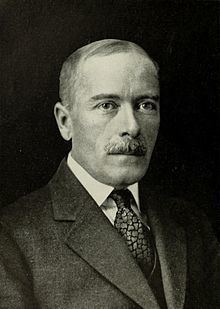Name Livingston Farrand | Role Physician | |
 | ||
Born June 14, 1867Newark, New Jersey ( 1867-06-14 ) Died November 8, 1939, Manhattan, New York City, New York, United States Books Traditions of the Chilcotin Indians Similar People Andrew Dickson White, Daniel Garrison Brinton, George II of Great Britain | ||
Lawrence P. Casalino
Livingston Farrand, M.D., LL.D. (June 14, 1867 – November 8, 1939) was an American physician, anthropologist, psychologist, public health advocate and academic administrator.
Contents
Career
Born in Newark, New Jersey, Farrand received an undergraduate degree from Princeton in 1888, and went on to the Columbia College of Physicians and Surgeons, where he earned his M.D. in 1891. He attended the Universities of Cambridge and Berlin. After graduating in 1893, he went on to serve as adjunct Professor of psychology at Columbia and after joining Franz Boas on expeditions to the Pacific Northwest (notably, the Jesup North Pacific Expedition) he became a full professor of anthropology in 1903, where he served until 1914.
He became executive secretary of the National Association for the Study and Prevention of Tuberculosis in 1905 and then in 1914 became president of the University of Colorado, and held that position until 1919. From 1912 to 1914, he was treasurer of the American Public Health Association, during the same period editing the American Journal of Public Health. During World War I he was director in France of the International Health Board, 1917-19. His public health work led to his appointment as Chairman the Central Committee of the American Red Cross and he worked to fight tuberculosis for the Rockefeller Foundation in France in 1917.
In 1921, he became the fourth president of Cornell University. Under his leadership, Cornell's enrollment and endowment increased rapidly. He also expanded Cornell-in-China with the University of Nanking and in 1931 saw the arrival in Ithaca of students from the Soviet Union. The unified College of Engineering was created as was the College of Home Economics.
He contributed many articles to psychological and anthropological publications; his articles treat principally of the anthropology of American Indians. In 1904, he wrote Basis of American History.
Family
Livingston was the brother of Max Farrand, Professor of History at Stanford University and Yale University. Max's wife was landscape architect Beatrix Farrand.
